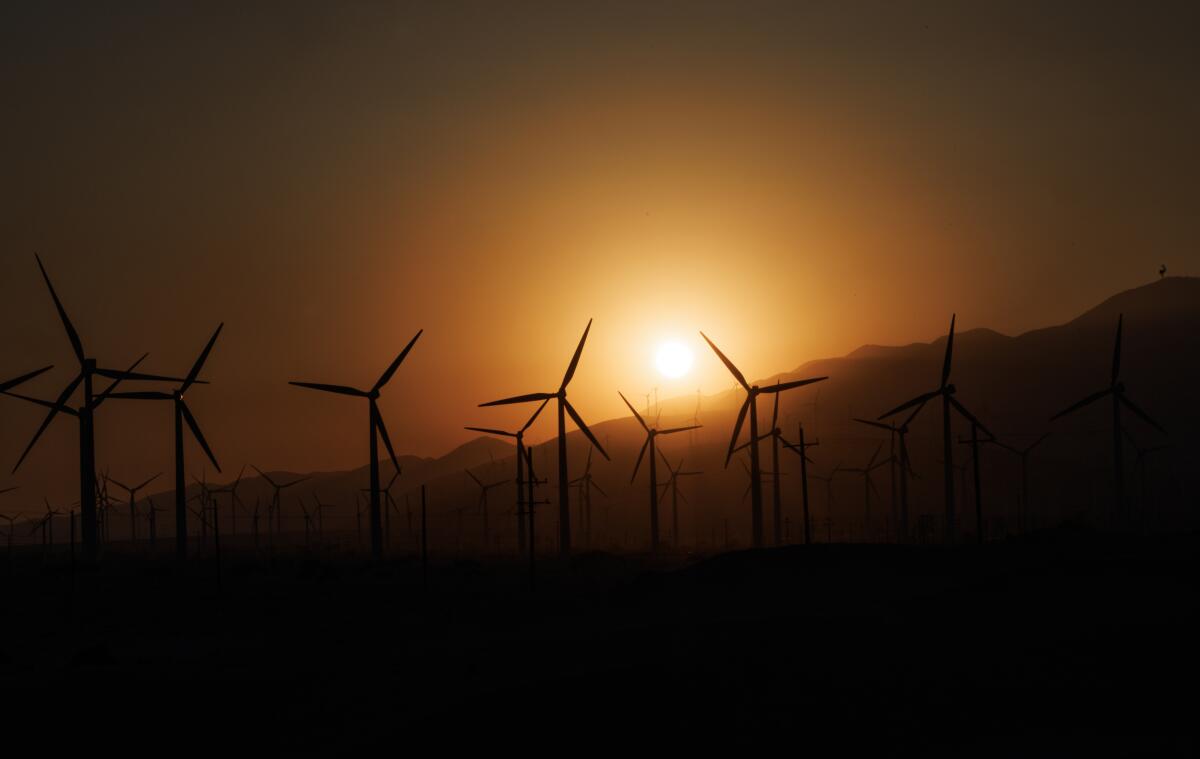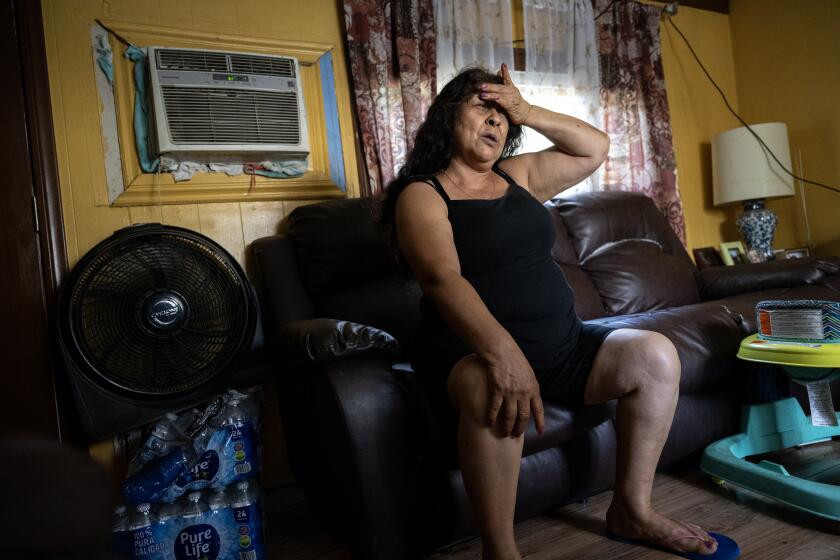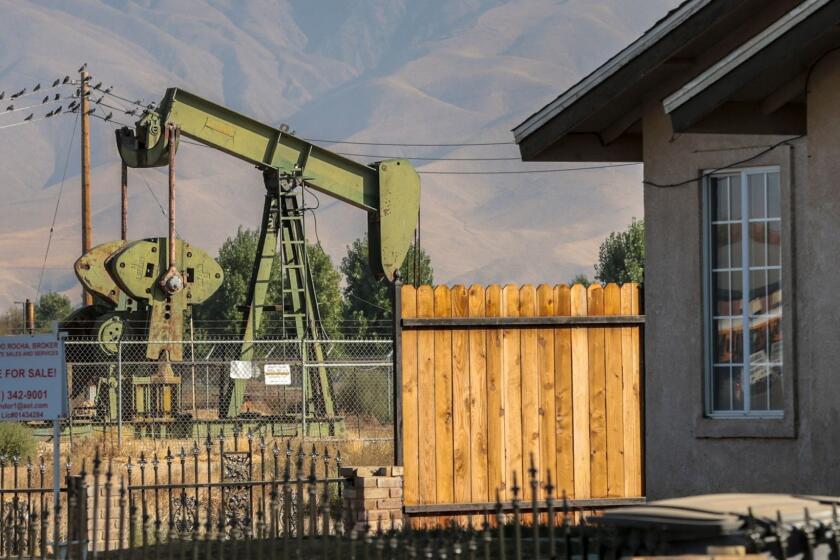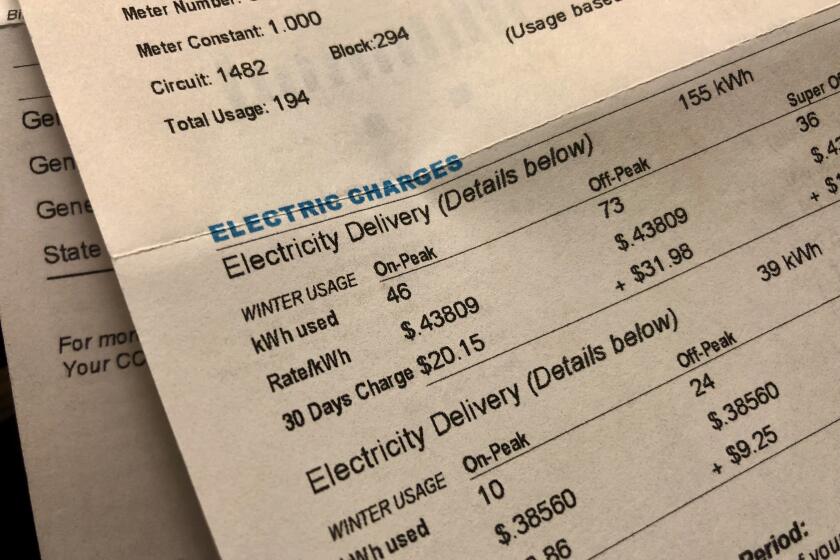Editorial: This record-breaking heat is an emergency. It’s time to treat it like one

It’s alarming that only a few weeks into the summer we’ve already experienced a prolonged heat wave that has put about 36 million Americans under excessive heat warnings and shattered temperature records across the West.
Palm Springs hit 124 degrees Friday, an all-time high. Redding reached a record 119 degrees Saturday. And on Sunday, Las Vegas got to 120 degrees, breaking its previous record by three degrees. Globally, June marked the 13th straight month of record-setting temperatures.
But all the attention on the numbers can overshadow the larger, frightening context: We are living in a dangerous new era of more frequent, more destructive and deadlier disasters fueled by humanity’s continued spewing of greenhouse gas pollution.
All California homes need temperature standards to prevent heat wave deaths, not just newly built ones.
Chief among the threats is extreme heat, killing more Americans than wildfires, hurricanes, floods or tornadoes. Heat waves caused an estimated $7.7 billion in economic impacts over the last decade in California alone, including lost wages, agricultural disruptions, power outages and infrastructure and health damage.
But even as Americans die from preventable heat-related illness, officials aren’t using all the tools available to them to respond. We need an urgent change in trajectory, not only by ending the burning of fossil fuels but also by doing much more to keep people safe.
While state and federal officials have made some strides with new efforts to warn people of the dangers from extreme heat and protect workers from heat illness and death, they’re still not doing everything they can to respond to this growing threat.
The oil industry withdrew its ballot measure to undo a California law banning new drilling near homes and schools. But it’s still trying to defeat these health protections in court.
Case in point: No U.S. president has ever issued an emergency or major disaster declaration for extreme heat. President Carter rejected a request from Missouri in 1980 after nearly 400 people died in a heat wave, and President Clinton rejected a declaration for the heat wave that killed more than 700 people in Chicago in 1995.
In 2022, President Biden rejected a major disaster declaration request from Gov. Gavin Newsom for the 10-day heat dome that killed an estimated 395 Californians, caused more than $3 billion in economic damage and “created weather and environmental conditions that significantly exacerbated the ignition and spread of wildfires across California,” destroying 183 homes.
The Federal Emergency Management Agency has denied all such requests on the grounds that the conditions haven’t been of such “severity and magnitude” that an effective response is beyond the capacity of state and local government. That is the threshold set under the Stafford Act, the law that governs federal disaster relief.
Electric bills are rising. Here are ways to reduce the burden without slowing the shift to home and vehicle electrification to meet our climate goals.
The federal government must revise its outdated view of what constitutes a disaster now that the planet is about 2.5 degrees hotter than preindustrial times and the 10 hottest years ever recorded have been in the last decade.
The Biden administration should seriously consider a petition filed last month by environmental, labor and health organizations that asks FEMA to recognize extreme heat and wildfire smoke as major disasters. They say that federal disaster relief funding could pay for life-saving infrastructure such as cooling centers with air filtration systems, and community solar and storage systems to help vulnerable communities stay cool and safe when the power grid is strained. It’s appropriate to include wildfire smoke because this intertwined climate-fueled health threat is also causing widespread illness and early death, and growing worse as temperatures climb.
The Extreme Heat Emergency Act, introduced last year, would amend the Stafford Act to spell out that extreme heat is a type of major disaster. But it shouldn’t require legislation for FEMA to get with the times.
The law already applies to “any natural catastrophe,” and environmental, labor and health advocates say that is broad enough to include heat and any other kinds of disasters even if they aren’t listed — such as the COVID-19 pandemic. Even FEMA acknowledges there is nothing specific in that 1974 law that precludes a declaration for extreme heat or wildfire smoke.
There are few areas where modernization of disaster response is more pressing than with heat waves. The old ways just aren’t cutting it anymore. Americans deserve a robust approach that’s befitting of our new climate reality.
More to Read
A cure for the common opinion
Get thought-provoking perspectives with our weekly newsletter.
You may occasionally receive promotional content from the Los Angeles Times.













